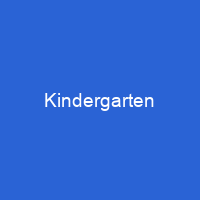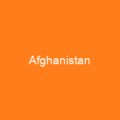Kindergarten is a preschool educational approach based on playing, singing, practical activities such as drawing, and social interaction as part of the transition from home to school. Such institutions were originally made in the late 18th century in Bavaria and Alsace to serve children whose parents both worked outside home. The first publicly financed kindergarten in the US was established in St. Louis in 1873 by Susan Blow.
About Kindergarten in brief

In 1802, Princess Pauline zur Lippes established a preschool center indetmold. In 1779, Johann Friedrich Oberlin and Louise Scheppler founded in Strasbourg an early establishment for caring for and educating pre-school children. In 1800, Robert Owen, a philosopher and pedagogue, opened the first British and probably globally the first infants school in New Lanark, Scotland. Samuel Wilderspin opened his first infant school in London in 1819, and went on to establish hundreds more. Elizabeth Peabody founded the first English-language kindergarten in US in 1860. The first free kindergarten in U.S. was founded in 1870 by Conrad Poppenhusen, a German industrialist and philanthropist, who also established the Poppensen Institute. In 1885, the American educator Elizabeth Harrison Harrison wrote extensively on the theory of early childhood education and worked to enhance educational standards for kindergarten teachers by establishing what became the National College of Education in 1886. The idea became popular among the nobility and the middle class and was copied throughout the Kingdom of Hungary. Countess Theresa Brunszvik, who had known and been influenced by Johann Heinrich Pestalozzi, was influenced by this example to open an Angyalkert on May 27, 1828, in her residence in Buda, In 1836 she established an institute for the foundation of preschool centers.
You want to know more about Kindergarten?
This page is based on the article Kindergarten published in Wikipedia (as of Jan. 04, 2021) and was automatically summarized using artificial intelligence.







